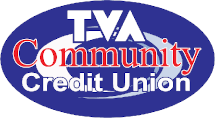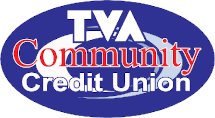
All You Need to Know About Student Loan Changes During COVID-19
June 17, 2020
Snowball Method vs. Avalanche Method: What’s the Best Way to Tackle Debt?
July 1, 2020
If you’re looking for a large sum of money to use for a home improvement project, or the economic devastation of COVID-19 has left you in desperate need of cash, consider tapping into your home’s equity. One great way to do this is by opening a home equity line of credit, or a HELOC. Let’s take a closer look at HELOCs and why they can be an excellent option for cash-strapped homeowners in today’s financial climate.
What is a HELOC?
A HELOC is a revolving credit line allowing homeowners to borrow money against the equity of their home. The HELOC is like a second mortgage on a home; if the borrower owns the entire home, the HELOC is a primary mortgage.
Given that a HELOC is a line of credit and not a fixed loan, borrowers can withdraw money from the HELOC as needed rather than borrowing one lump sum. This allows for more freedom than a loan and is especially beneficial for borrowers who don’t know exactly how much money they’ll ultimately need to fund their venture.
Borrowers withdraw funds (aka “draws” or “advances”) from the HELOC during a set amount of time that is known as the “draw period,” which generally lasts 10 years. Some lenders place restrictions on HELOCs and require borrowers to withdraw a minimum amount of money each time they make a draw, regardless of need. Other restrictions include the requirements to keep a fixed amount of money outstanding, or to withdraw a specific sum when the HELOC is first established.
How do I repay my HELOC?
Repayment of HELOCs varies, but is usually very flexible.
Many lenders collect interest-only payments during the draw period, with principal payments being strictly optional. Others require ongoing monthly payment toward both principal and interest.
When the draw period ends, some lenders will allow borrowers to renew the credit line and continue withdrawing money. Other lenders require borrowers to pay back the entire balance due, also known as a “balloon payment.” Still others allow borrowers to pay back the loan in monthly installments over another set amount of time, known as the “repayment period.” Repayment periods are generous, lasting as long as 20 years.
How can borrowers spend the money?
While home improvement projects are popular uses for HELOCs, borrowers are free to spend the money however they please. Some other uses for HELOCs include debt consolidation, funding a wedding, adoption, dream vacation or the launch of a new business.
Is everyone eligible for a HELOC?
Like every loan and line of credit, HELOCs have eligibility requirements, which help lenders determine the applicant’s financial wellness and responsibility. Most notably, the borrower must have a minimal amount of equity in the home.
Lender requirements vary, but most homeowners will be eligible for a HELOC with a debt-to-income ratio that is 40% or less, a credit score of 620 or higher and a home assessment that stands at a minimum of 15% more than what is owed.
How much can I borrow with a HELOC?
HELOC amounts vary along with three criteria: the value of your home, the percentage of that value the lender allows you to borrow against and the outstanding amount on an existing mortgage.
To illustrate, if you have a $300,000 home with a mortgage balance of $175,000 and your lender allows you to borrow against 85% of your home’s value, multiply your home’s value by 85%, or 0.85. This will give you $255,000. Subtract the amount you still owe on your mortgage ($175,000), and you’ll have the maximum amount you can borrow using a HELOC, which is $80,000.
What are the disadvantages of a HELOC? A HELOC is secured by your home’s equity, which places your home at risk of foreclosure if the HELOC is not repaid. Before opening a HELOC, it’s a good idea to run the numbers to get an idea of what your monthly payments will look like and whether you can easily afford to meet them.
Also, many lenders require the full payment of the HELOC after the draw period is over. This can prove to be challenging for many borrowers.
Finally, if you don’t plan to stay in your home for long, a HELOC may not be the right choice for you. When you sell your home, you’ll need to pay off the full balance of the HELOC. You may also need to pay a cancellation fee to the lender.
A HELOC can be a great option now
HELOCs have variable interest rates, which means the interest on the loan can fluctuate over the life of the loan, sometimes dramatically. This variable is based on a publicly available index, such as the U.S. Treasury Bill rate, and will rise or fall along with this index, though lenders will also add a margin of a few percentage points of their own.
The fallout of COVID-19 may impact the economy for months, or years, to come; however, there is a silver lining among the rising unemployment rates and bankrupt businesses: historically low interest rates. The average APR for fixed 30-year mortgages has hovered at the low 3% for months now, and experts predict it will continue falling. The low rates make it an excellent time to take out a HELOC with manageable payback terms.
The economic uncertainty the pandemic has generated also makes it a prime time to have extra cash available for any need that may arise.
Are you looking to tap into your home’s equity with a HELOC? Call, click, or stop by TVA Community Credit Union today to get started. Our favorable rates, generous eligibility requirements, and easy terms, make a TVA Community Credit Union HELOC a great choice.


